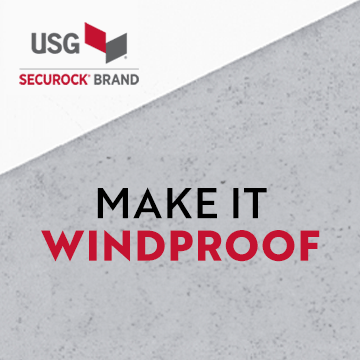Magic Ice Guard Mistake
« Back To Roofers TalkThere a lot of talk of ice shield and and its cure all capabilities. It does not matter what brand you use or how much you pay for it, It will not stop water infiltration if all the other components are not perfect. Case in point, I was doing a repair yesterday on a roof that is 8 years old, were it leaked along the outside wall. Clearly an ice dam issue. Upon removing the shingles in the leak area i found it had Grace installed correctly. Up the wall and over the face board. Why the leak you ask????? because the nails rusted away to nothing leaving nice perfect 1/8 holes through the grace for the water to go through into the home. To make a truly effective seal you would need to make a couple of changes to HOW you install the shingles #1 Use hot dipped or stainless steel nails were you install the ice shield so they wont rust when exposed to water back up #2 more importantly reduce the exposed area of the shingles at the eave so water wont get to the fasteners. Example install 8 course's at 4 inch exposer instead of the normal 5 inch thus covering the nail father and it will be less likely to rust.
Despite the correct installation of Grace, extending it up the wall and over the face board, the leak persisted. The root cause was identified as the nails rusting away, creating 1/8-inch holes in the Grace membrane. To enhance the effectiveness of the seal, a few modifications in shingle installation are proposed:
Use hot-dipped or stainless steel nails: Opt for corrosion-resistant materials for nails where the ice shield is installed. This prevents rusting when exposed to water backup.
Reduce exposed shingle area at the eave: Significantly decrease the exposed area of shingles at the eave to prevent water from reaching the fasteners. For instance, install 8 courses with a 4-inch exposure instead of the typical 5-inch, covering the nail farther and reducing the likelihood of rusting.
By implementing these changes in shingle installation, a more effective seal can be achieved, addressing potential issues related to water infiltration and maintaining the integrity of the roofing system.
I just had this conversation with my son. We never depended on roof cenents,or had Ice &water shield. Just old school ability.
All my 30 years of roofing has been in the southeastern states so i lack experience with ice damming problems. Around here no Ice/Water shield is used at the bottoms or rake edges. If used at all its generally along walls, around chimneys, in valleys, around skylights, etc.. To me its like buying insurance at the black jack table just because the dealer has a scary ace showing.
Tinner you And I are old school (pun intended)I grew up in roofing when there was no such thing as ice shield. You had to rely on thinking ability and skill to make a roof water tight with out all the gooey stuff. To this day I still ,even with ice shield ,which I'm required to use , will shorten all eave course's or anywhere else were ice or water flow may be a problem. The next repair I get that shows those rusted out nails I'll post em.
Sacrilege Larry! Every time I mention shortening exposure and increasing headlap, I get boooed! :laugh: Big time too! :laugh:
Truth is, shingles can be installed like slate. Shortened, lapped, and random too if you want to get crazy! Random is hampered though by the height limitation unlike slate where a 24" can be weaved into a field of 12's if you wanted to.
.jpg)
.jpg)
.jpg)
.jpg)
Ice/Water Shield is a good sales tool but not a substitute for a correctly installed roof.
Well Twill when I roofed my house this year I used stainless steal nails where ever I used ice shield. I have been trying to get my employer to see the value of doing the same on all jobs.






















